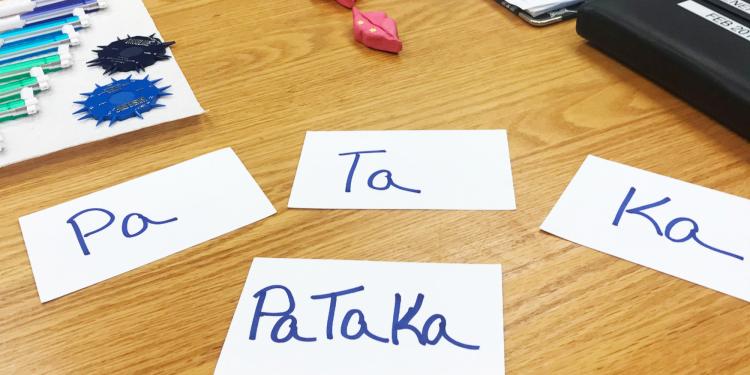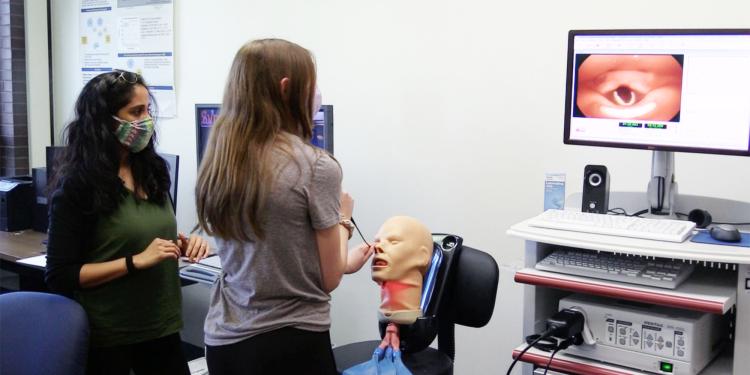-
About
Explore
-
Undergraduate
Explore
-
Graduate
Explore
-
Research
Explore
-
Alumni
ExploreUp a level (this gets replaced in JS)
-
Getting Started
Explore
-
Alumni Support
Explore
-
Parents and Families
Explore
-
Get Involved
Explore
-
Get Connected
Explore
-
Donate
Explore
- Alumni Events
- Give to CSD
- Update Your Contact Information
-
Getting Started
-
Outreach & Service
ExploreUp a level (this gets replaced in JS)
-
Speech, Language, and Hearing Clinic
Explore
-
Supporting Communication Through Performance
Explore
- Events
- Support
- Contact Us
-
Speech, Language, and Hearing Clinic
-
Contact
ExploreUp a level (this gets replaced in JS)
-
CSD Contacts
Explore
-
Speech, Language, and Hearing Clinic
Explore
-
College Contacts
Explore
- Department Directory
- Speech, Language, and Hearing Clinic
-
CSD Contacts
-
Departments
Explore
-
Research Centers
Explore
-
Central Administration
Explore
-
Training and Support
Explore
- Contacts/Directory
Research in Oral Motor Control, Speech, Voice, and Swallowing
Experts in speech, voice, and swallowing
Researchers in CSD work to answer complex questions related to aging and skilled oral motor behaviors.
We engage with the local community by acting as a resource for education and support for healthy speech, voice, and swallowing.

Orofacial Physiology and Perceptual Analysis (OPPAL) Laboratory
Principal Investigator: Nicole Etter, Ph.D., CCC-SLP
Visit the lab website | Instagram
Studying sensorimotor control for skilled oral behaviors like speech, voice, and swallowing in healthy aging and clinical populations
The OPPAL lab focuses on how somatosensation (touch sensation) is used to learn, maintain, and relearn skilled oropharyngeal activities like speech, voice, and swallowing across the adult life span. Additional work focuses on healthy aging voice and professional voice users.

Research in Aging and Dysphagia (RAD) Lab
Principal Investigator: Aarthi Madhavan, Ph.D., CCC-SLP
Studying early identification of dysphagia in healthy aging and clinical populations
The RAD (Research in Aging and Dysphagia) lab is interested in improving early identification, screening, and assessment methods in dysphagia. In working towards this goal, the lab focuses on improving assessment and screening of dysphagia in community dwelling older adults.
Additionally, we study mechanisms that relate to dysphagia and change with age, to determine best methods for early identification. At the RAD lab we also work with improving assessments in clinical populations like Amyotrophic Lateral Sclerosis (ALS) and are building collaborations to expand into developmental disabilities. This research involves close collaborations with other speech pathologists, clinicians and researchers in aging, food science, and nutrition.

Speech Production Laboratory
Principal Investigator: Jimin Lee, Ph.D., CCC-SLP
Studying Dysarthria, Articulatory Kinematics, Speech Acoustics, Speech Intelligibility
This lab seeks to understand why less comprehensible speech occurs by examining speech sound, tongue movement, and intelligibility. The long-term goal of the laboratory is 1) to develop strategies to enhance speech intelligibility of individuals with dysarthria, and 2) to develop a clinically feasible assessment tool for dysarthria. In addition, in collaboration with Dr. Olmstead and Dr. Viswanathan, we investigate how speech production and perception change in interactive contexts between people with dysarthria and their caregivers.
Research in this laboratory focuses on articulatory kinematics (with an emphasis on tongue and jaw movement), speech acoustics, and speech intelligibility in speakers with and without dysarthria. We seek to understand physiological underpinnings of reduced intelligibility in individuals with dysarthria to inform clinical assessment and intervention. The primary clinical population has been individuals with dysarthria secondary to amyotrophic lateral sclerosis. More recently, this focus has broadened to encompass individuals with Down syndrome.
The Speech Production Laboratory is equipped with a portable 3-dimensional electromagnetic articulography, or EMA (Wave system, Northern Digital Inc.). In addition, Speech Core is newly equipped with AG501 (Carstens Medizinelektronik GmbH), a type of EMA. The EMA systems allow examining tongue movement with synchronized acoustic signals in a non-invasive and safe way.



